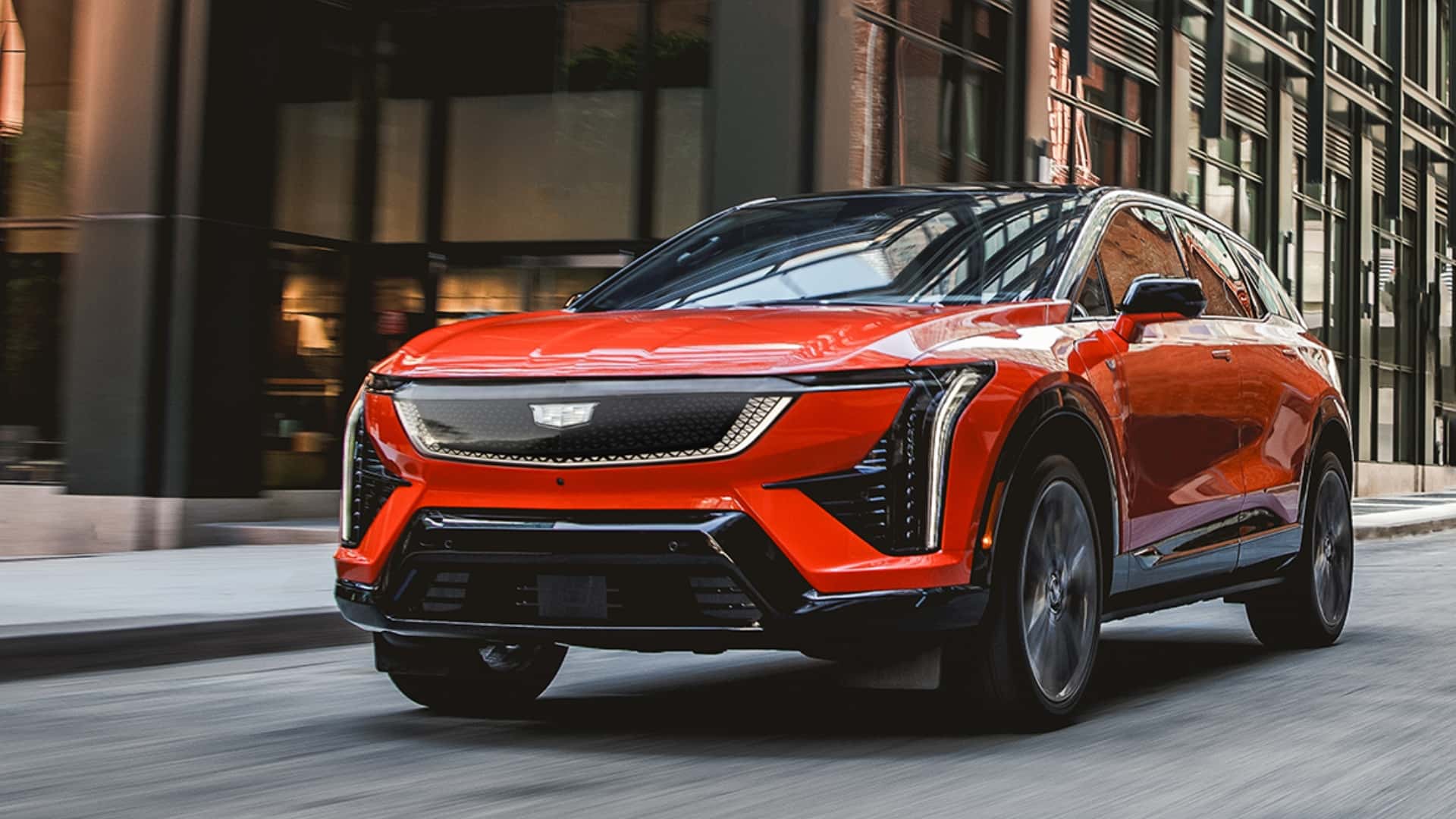Cadillac was named the top brand for luxury electric vehicles in the U.S. last quarter. The company has released a complete range of electric cars, from smaller crossovers to a $300,000 flagship model. Cadillac reports that it is attracting buyers from other luxury brands with its appealing EVs, but the next challenge is to make a profit from these sales.
Cadillac has heavily invested in electric vehicles, launching several models, including the Optiq, Lyriq, Vistiq, Escalade IQ, and Celestiq, over the past few years.
The brand’s goal was to become a leader in EV sales, and according to Cadillac Vice President John Roth, they have achieved this. Cadillac was the best-selling luxury EV brand in the country last quarter.
This is significant for Cadillac and the entire EV market. For Cadillac, it represents a much-needed recovery after a long period of struggling to connect with consumers. The company’s name was often associated with its past success, not its current offerings, which previously didn’t capture consumer interest (except for the Escalade). However, they have now delivered a lineup of attractive, technologically advanced EVs.
Essentially, Cadillac executives say the brand is finally succeeding.
It’s also a significant development for the overall EV market, demonstrating the potential for companies willing to invest seriously in the transition. Traditional perceptions of who makes the best cars are changing, as different players are investing varying levels of effort.
While Lexus offered hybrid vehicles 20 years ago, its EV sales are minimal compared to Cadillac’s. This is because Cadillac is offering a diverse range of options with new designs, software tailored for EVs, and competitive leasing deals. Lexus currently has only one EV, which feels somewhat underdeveloped, though a significantly upgraded version is on its way.
This has led to a notable success for Cadillac: they are acquiring many buyers from other brands. Conquest rates for the Lyriq and Optiq are 79% and 76%, respectively, indicating that over three-quarters of all buyers are new to Cadillac. When asked about these new customers, Roth listed major brands including Tesla, Mercedes, Audi, and Lexus.
“Yeah, all the big luxury tier one buyers are coming our way, and we’re very happy about that,” Roth stated. “We’re giving them a great vehicle and a great experience with excellent range, great technology, great customer service, and a great dealer network for service.”
It’s also a major opportunity for the EV market, as buyers are actively seeking electric vehicles, regardless of government incentives. Furthermore, the average age of these new Cadillac buyers is lower than the overall luxury market average, with buyers aged 47 or 48 for the Escalade IQ and Vistiq, compared to the mid-50s for the general luxury market.
One Big Hurdle Remains: Profit
While this is encouraging news for Cadillac, it faces the same challenge as many established brands: profitability in the EV market. Although Roth is confident Cadillac is on the right track, he doesn’t have a specific timeline for when their EV lineup will become profitable.
The situation will become more challenging as tax credits are phased out and tariffs increase the price of materials like steel, aluminum, and auto parts. Most automakers are still losing money on many EV sales, and the loss of tax credits will likely exacerbate this issue.
General Motors has invested more than any other American automaker in its EV business and claims its EVs are “variable profit positive,” although this framing includes benefits like not having to purchase regulatory credits.
Nevertheless, Roth suggested Cadillac is better positioned than many rivals to navigate the changing EV market.
“There are EV buyers in the marketplace, regardless of what governmental programs are in place, and we have the opportunity to showcase the best catalogs, and we’re bringing those customers into the brand. I don’t see that stopping. I see that as an advantageous opportunity, especially for Cadillac being one of the most American-manufactured vehicles,” he said, referring to the fact that Cadillac offers more U.S.-built nameplates than any other luxury brand.
While this is true, the increasing cost of EVs, potentially by $7,500 or more, poses a significant challenge. This reflects a broader trend in the automotive industry where some companies are better equipped to handle the transition but still face short-term financial difficulties due to adjustments to their business models and the loss of subsidies.
It will not be easy, but Cadillac’s success story suggests that the company can adapt. The question remains whether they can sustain this momentum as the EV market continues to evolve.

I’m Rohan Mehta, the voice behind KhelRe—a trusted and steadily growing blog dedicated to electric vehicles (EVs) in India. With over five years of experience as a tech and automotive blogger, I turned my frustrations with owning an EV into a mission: to help others make more intelligent choices in this fast-evolving world of electric mobility.
I’ve been an early adopter of EV technology—I repurchased my first electric scooter in 2019. That experience opened my eyes to both the promises and the pitfalls of this new mode of transport. From slow charging times and range anxiety to misleading specs and hidden costs, I’ve faced it all. But instead of walking away, I decided to write about it.
That’s how KhelRe was born—a no-nonsense, hands-on blog where I share practical, real-world reviews of EV cars, bikes, and scooters. I break down features, range, performance, and pricing from a user-first perspective. I take pride in simplifying complex tech into clear, valuable insights—offering tips, ownership stories, and advice you won’t find in flashy press releases or sales brochures.
Whether you’re a first-time EV buyer or just a curious auto enthusiast, my goal is to help you navigate the EV landscape with confidence. My motto: “EV knowledge should come from experience, not just brochures.”
When I’m not test-driving the latest e-scooter or comparing charging networks, you’ll probably find me tinkering with my garage EV setup, chatting with fellow enthusiasts online, or sipping chai while writing my next blog post from a cosy local café.

